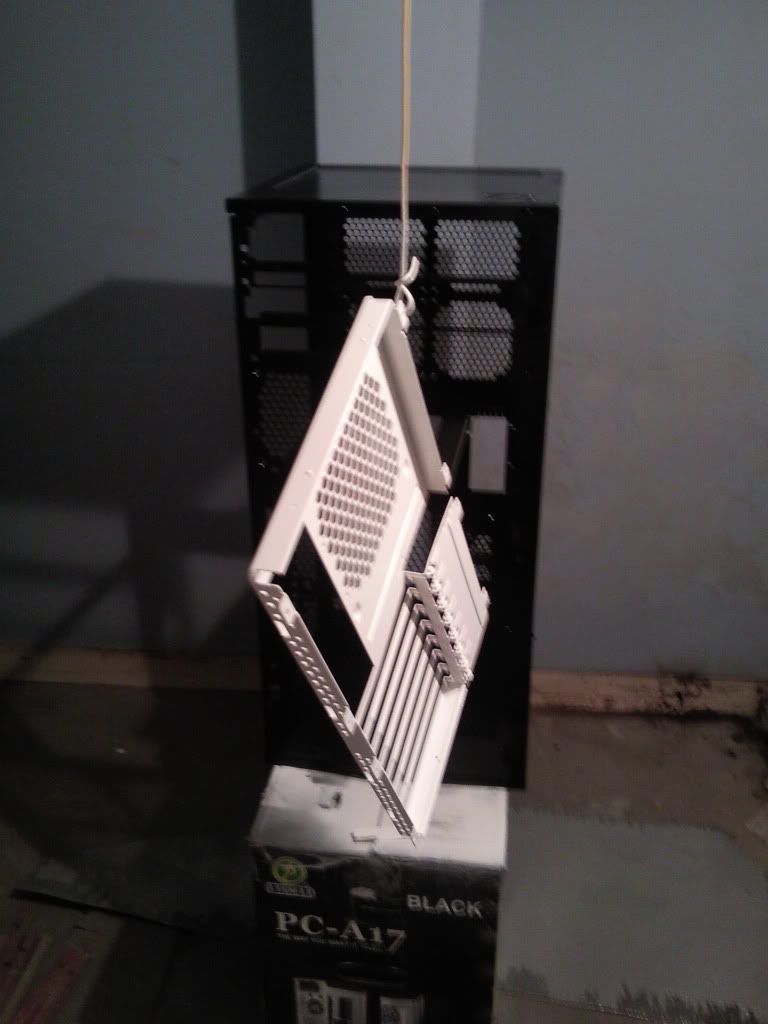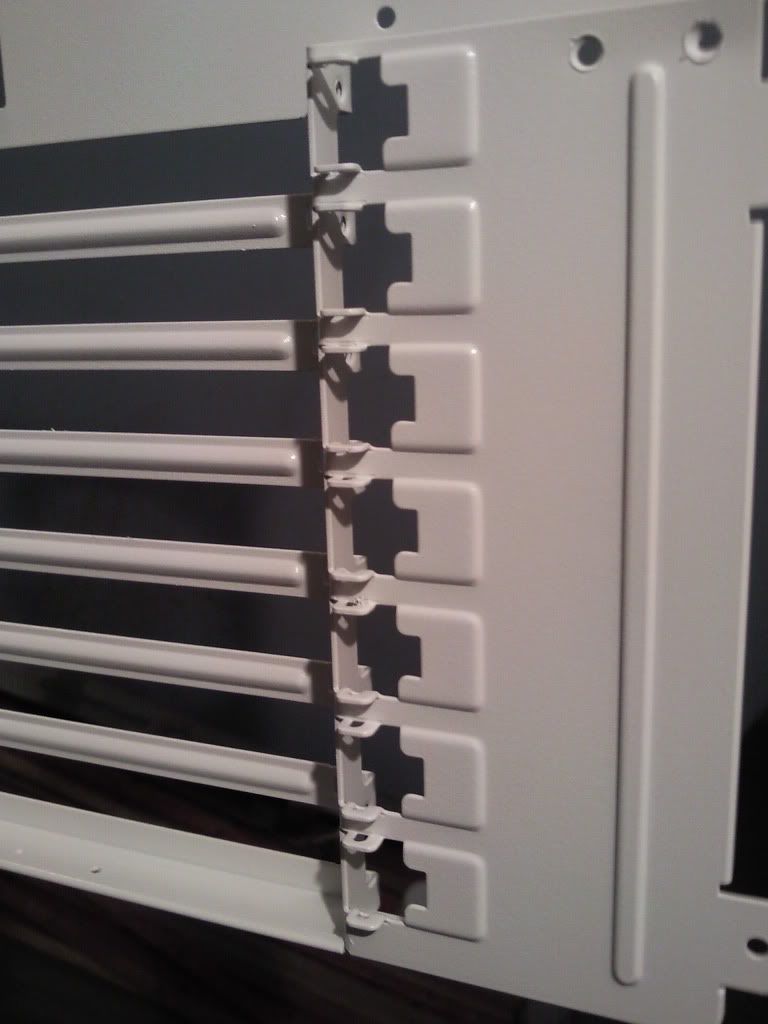You are using an out of date browser. It may not display this or other websites correctly.
You should upgrade or use an alternative browser.
You should upgrade or use an alternative browser.
eXtreme Liquid Cooling - Build Log + Overclocking
- Thread starter Pneumonic
- Start date
More options
Thread starter's postsUpdate 2:
So whilst I wait for the delivery man to battle through the snow with the heat exchanger and various other goodies I made a start this afternoon on the case..
So first step was to remove all the internal drive bays and other 'things' that are just going to get in the way of radiator goodness! So with the rivets drilled out (and believe me there were plenty!) I got the case downstairs into the basement..
After some sanding I got the undercoat on:
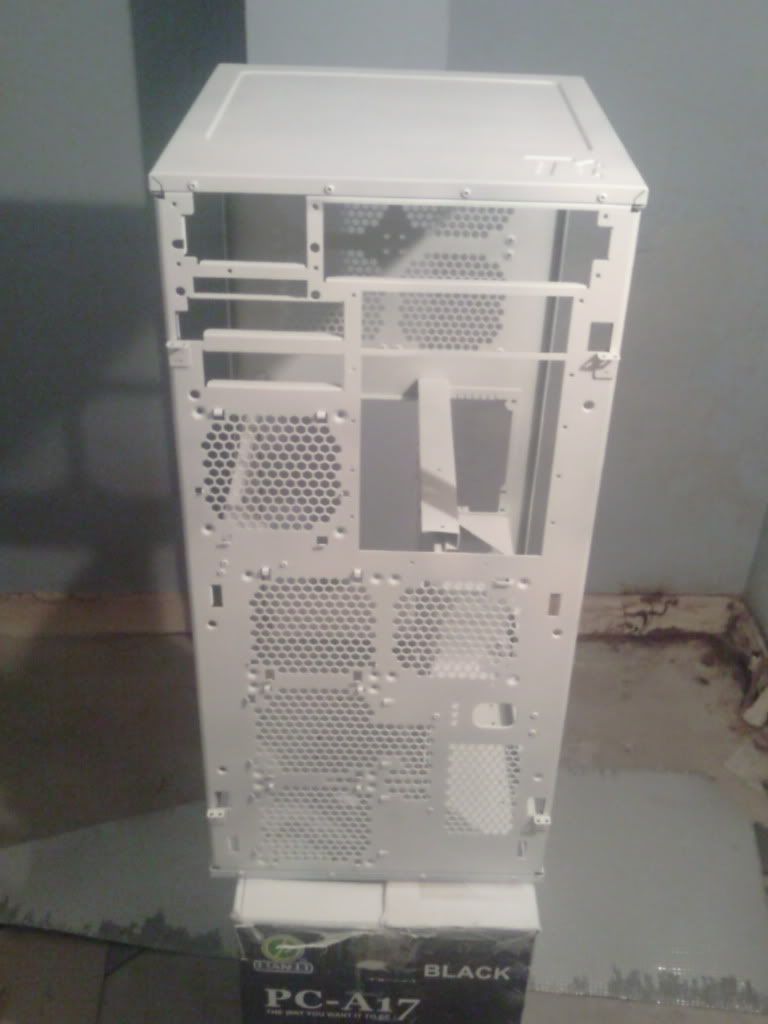
Front
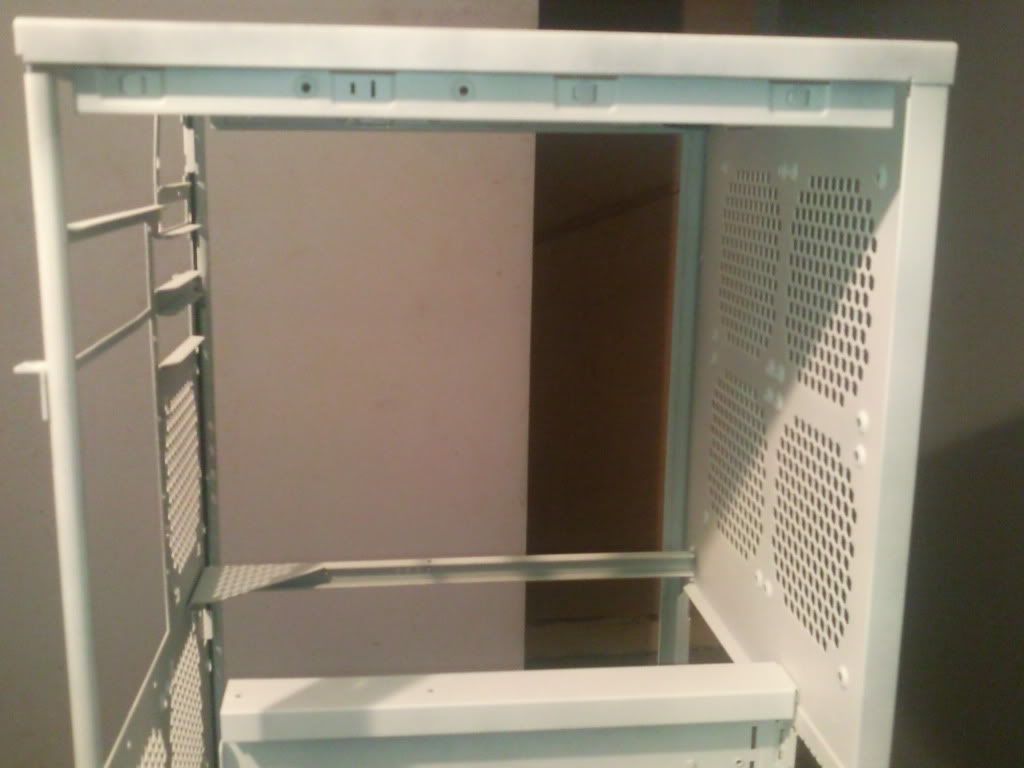
Internals
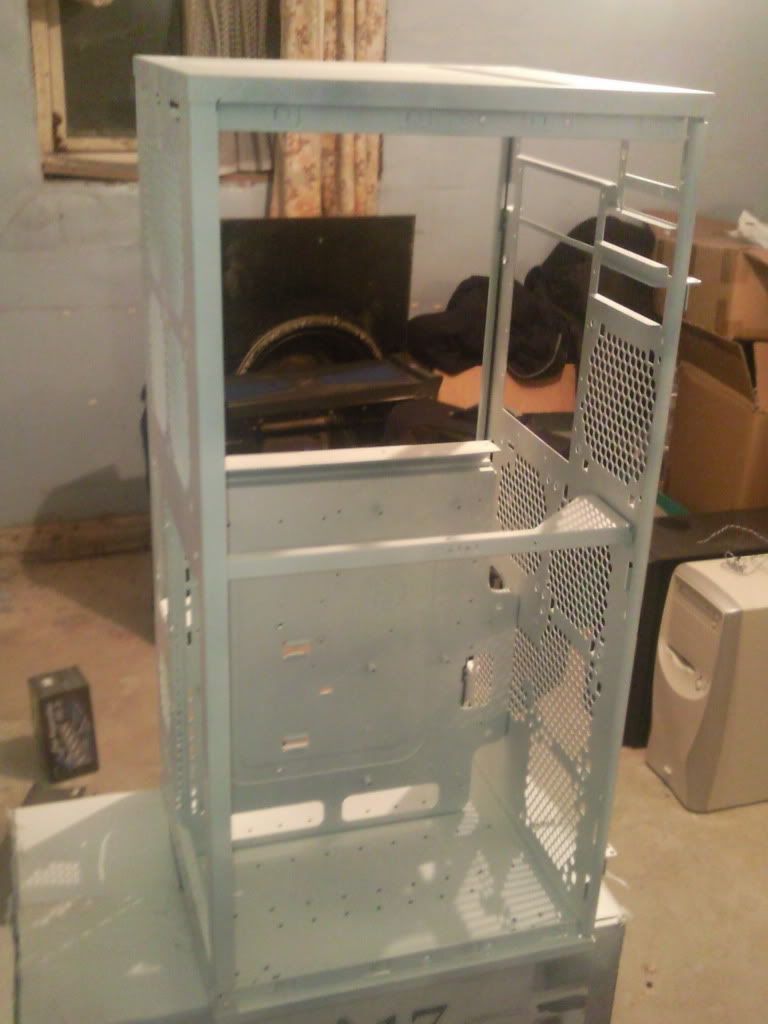
Side View
So whilst I wait for the delivery man to battle through the snow with the heat exchanger and various other goodies I made a start this afternoon on the case..
So first step was to remove all the internal drive bays and other 'things' that are just going to get in the way of radiator goodness! So with the rivets drilled out (and believe me there were plenty!) I got the case downstairs into the basement..
After some sanding I got the undercoat on:

Front

Internals

Side View
Associate
What colour is it going to be in the end? You sticking with the white internals? Looks pretty nice and clean like that  And plenty of room in there for rads, I wouldnt be worrying about space too much haha
And plenty of room in there for rads, I wouldnt be worrying about space too much haha
 And plenty of room in there for rads, I wouldnt be worrying about space too much haha
And plenty of room in there for rads, I wouldnt be worrying about space too much hahaMy last case was white with black 'highlights' and although it looked really cool its an arse to clean, as the dust really shows up... so this one I have done black as the main colour (pictures to follow)... not so sure on the offset yet probably white.. not original I know but it does look damn nice..
So at the moment I plan to paint the radiators white, along with all the block tops.. board is black PCB so should offset nicely and I will use white tube. I am also planning on compartmenting the case using either black acrylic which should look pretty cool with the tubing going in and out.. also means I can have different direction on air-flow through the case.. for instance the PA120.3 for the graphics loop I am going to mount on front blowing out in the motherboard tray compartment, so airflow into this compartment will come from the rear.. where as for the main exchanger loop airflow will go from front -> rear
So at the moment I plan to paint the radiators white, along with all the block tops.. board is black PCB so should offset nicely and I will use white tube. I am also planning on compartmenting the case using either black acrylic which should look pretty cool with the tubing going in and out.. also means I can have different direction on air-flow through the case.. for instance the PA120.3 for the graphics loop I am going to mount on front blowing out in the motherboard tray compartment, so airflow into this compartment will come from the rear.. where as for the main exchanger loop airflow will go from front -> rear
Update 3:
Last night I applied the first two coats of black to the case, followed up this morning by coat three which was just a touch up job.. so just needs a couple of coats of lacquer (sp?!) now to protect it from knocks and scraps and will be ready to start housing some equipment..
So some eye candy for you all (please excuse the image quality! I will be getting some batteries for my digital camera today to take some proper pictures):
Logo:
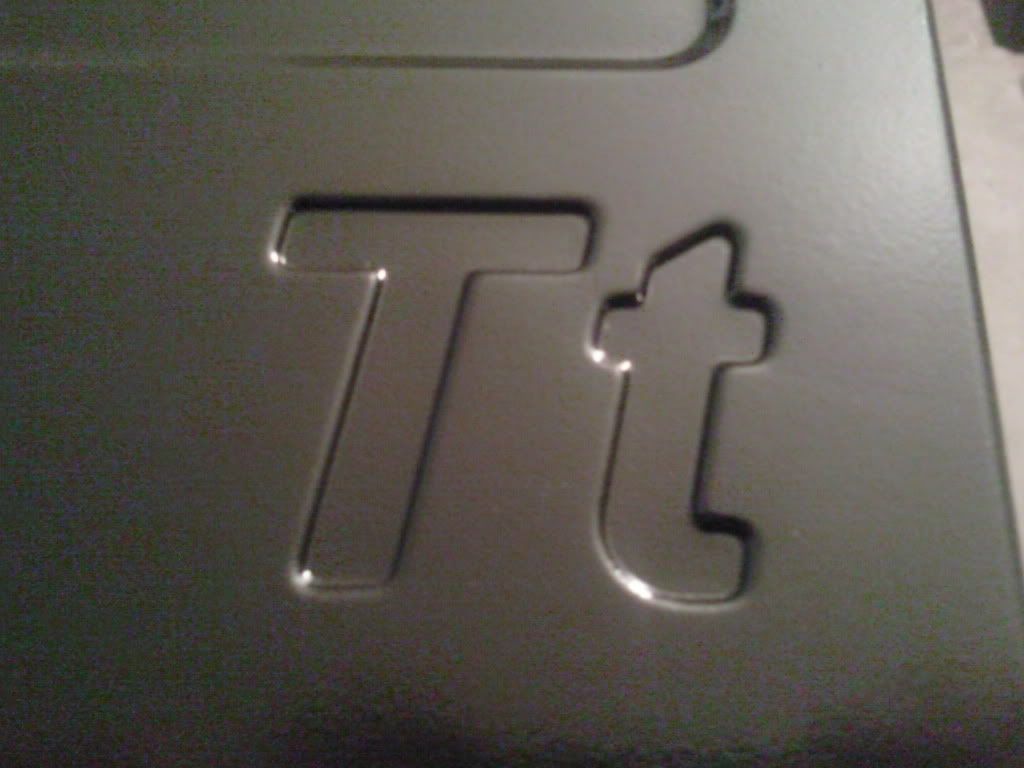
Internals:
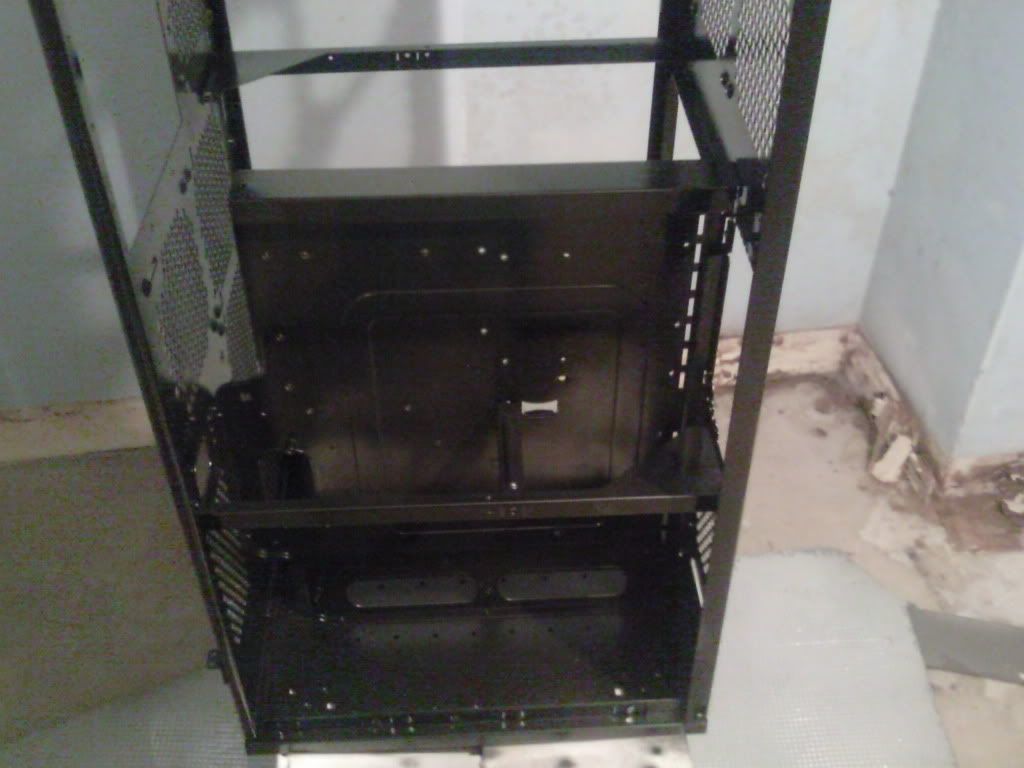
Front:

I will be striping down and washing the front panel today and then will start the modification process to fill in various parts prior to it going down to the basement for it's paint job.. Back panel (i.e. PCI slots etc..) will be getting the same treatment although this part will be in white..
Last night I applied the first two coats of black to the case, followed up this morning by coat three which was just a touch up job.. so just needs a couple of coats of lacquer (sp?!) now to protect it from knocks and scraps and will be ready to start housing some equipment..
So some eye candy for you all (please excuse the image quality! I will be getting some batteries for my digital camera today to take some proper pictures):
Logo:

Internals:

Front:

I will be striping down and washing the front panel today and then will start the modification process to fill in various parts prior to it going down to the basement for it's paint job.. Back panel (i.e. PCI slots etc..) will be getting the same treatment although this part will be in white..
Associate
I spy an epic thread !!!!
Glad to see i,m not the only one that cleaned a p.c case in the bath
Glad to see i,m not the only one that cleaned a p.c case in the bath

Associate
rivet rage got to love it
level up with epoxy resin for the clean lean i hate rivets machine, just make sure you use primer afterwards tho as it it doesnt like paint much !!!!
level up with epoxy resin for the clean lean i hate rivets machine, just make sure you use primer afterwards tho as it it doesnt like paint much !!!!
Update 5:
So a little more work carried out, everything's been drying for a good 24 hours so time to put it together.
Case Rear:
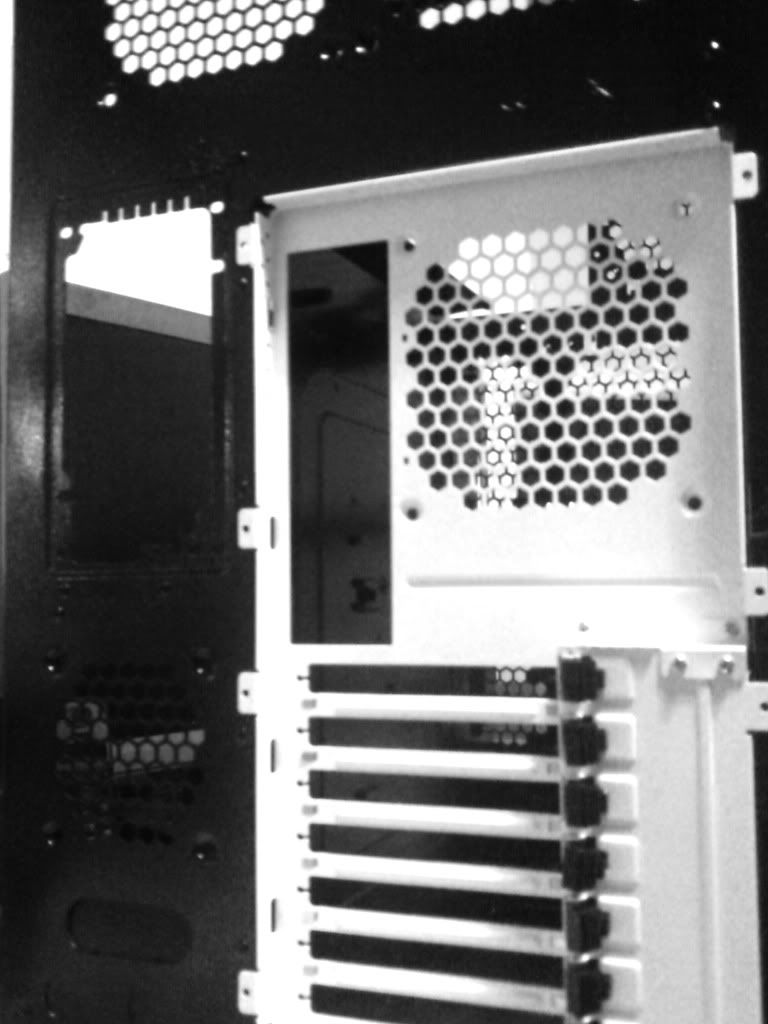
Back Plate Close Up:
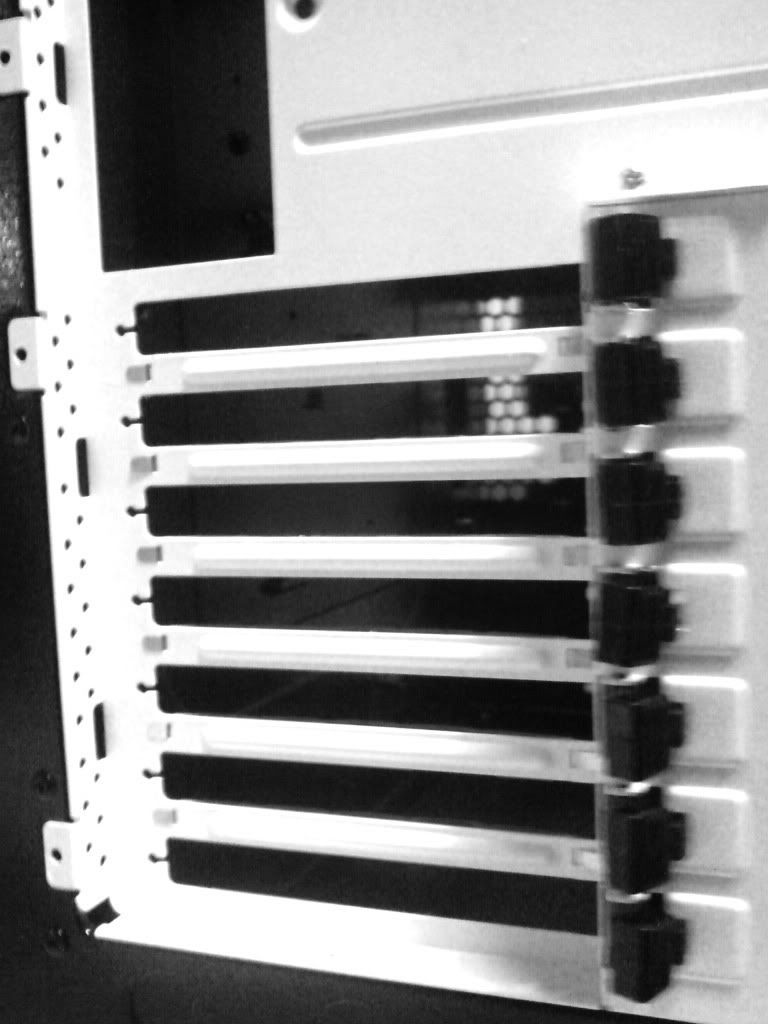
With that complete it have started work on the front panel of the case, pictures to follow..
So a little more work carried out, everything's been drying for a good 24 hours so time to put it together.
Case Rear:

Back Plate Close Up:

With that complete it have started work on the front panel of the case, pictures to follow..
Soldato
That case is HUGE!!!
Nice job on the painting mate, I'm still trying to decide whether I should paint the internals of mine myself, or if I should just send it off to be powder coated instead..
Nice job on the painting mate, I'm still trying to decide whether I should paint the internals of mine myself, or if I should just send it off to be powder coated instead..
Update 6:
Well being Christmas I haven't got a huge amount done but I have now go everything on order! YAY! So should be able to start putting parts together soon!
With that in mind I thought I would detail a few of the more unusual parts of the build:
Heat Exchanger:
To ensure heat exchange between the two sides of the TEC units I will be using two Lytron CP-15 cold plates. As per the picture below the cold plates will be mounted with the tubed copper in direct contact with the TEC units. Thermal resistance should be around 0.004 C/W at my expected flow rate, this (if my calculations are correct!) at 24/7 power use of the TEC units should give a liquid temperature on the cold side of around -40 to -45 depending on ambient. Of course these are 'rough' calculations as there are far to many variables at play to get exact temperatures.
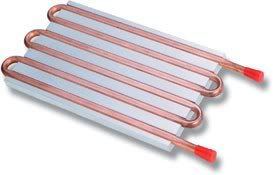
The cold plates are coming with pre-drilled M4 sized holes to allow the units to be bolted together at the required pressure. The TEC units will sit in a pre-cut 3mm thick silicon rubber gasket (not sure if that's the correct terminology?!), to ensure separation of the hot and cold plates. The cold side of the plate will also be insulated by 6mm silicon rubber to ensure minimal heat loss.
I have chosen silicon rubber over closed cell neoprene as I am assured by the manufacture that it will retain its flexibility and rubber like properties down to around -80c, whereas the neoprene may not cope with constant -40c temperatures for long durations of time.
Cold Side Tubing Insulation:
The tubing on the cold side will need to be insulated to stop condensation and ensure minimum loss to heat to the sub-zero liquid. This will be achieved using nitrile rubber insulator tube which is rated for temperatures down to -50c.
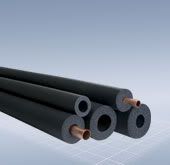
The insulator tubing is relatively flexible and has a wall thickness of 13mm (for a total tube diameter of 28mm) so shouldn't look to bulky.
Well being Christmas I haven't got a huge amount done but I have now go everything on order! YAY! So should be able to start putting parts together soon!
With that in mind I thought I would detail a few of the more unusual parts of the build:
Heat Exchanger:
To ensure heat exchange between the two sides of the TEC units I will be using two Lytron CP-15 cold plates. As per the picture below the cold plates will be mounted with the tubed copper in direct contact with the TEC units. Thermal resistance should be around 0.004 C/W at my expected flow rate, this (if my calculations are correct!) at 24/7 power use of the TEC units should give a liquid temperature on the cold side of around -40 to -45 depending on ambient. Of course these are 'rough' calculations as there are far to many variables at play to get exact temperatures.

The cold plates are coming with pre-drilled M4 sized holes to allow the units to be bolted together at the required pressure. The TEC units will sit in a pre-cut 3mm thick silicon rubber gasket (not sure if that's the correct terminology?!), to ensure separation of the hot and cold plates. The cold side of the plate will also be insulated by 6mm silicon rubber to ensure minimal heat loss.
I have chosen silicon rubber over closed cell neoprene as I am assured by the manufacture that it will retain its flexibility and rubber like properties down to around -80c, whereas the neoprene may not cope with constant -40c temperatures for long durations of time.
Cold Side Tubing Insulation:
The tubing on the cold side will need to be insulated to stop condensation and ensure minimum loss to heat to the sub-zero liquid. This will be achieved using nitrile rubber insulator tube which is rated for temperatures down to -50c.

The insulator tubing is relatively flexible and has a wall thickness of 13mm (for a total tube diameter of 28mm) so shouldn't look to bulky.
Associate
You#re using Tecs to chill water? Isn't it much more efficent to use the tecs to cool the components directly...
Not even slightly, tecs to chill water is definitely the way to go.
How many tecs? Which tecs? I'm guessing half a dozen or so 50mm square ones undervolted driven from a dedicated psu.
The cold plate is a slightly odd design. Only the areas in direct contact with the copper will be cooled (as ceramic is a poor conductor) so are you planning on putting some form of heatspreader between tec and the tubes?
Finally 70 below ambient is a hell of a lot to ask for from peltiers at reasonable heat load, can I conclude that you're stacking them?
Apologies for the questions without constructive input, I'm starting to suspect that this project is very similar to what I'm planning so I may have useful things to say in the future. Cheers for the build log
p.s. wall thickness of 13mm, total diameter 28mm, surely you don't have 2mm OD copper tubing in mind?
How many tecs? Which tecs? I'm guessing half a dozen or so 50mm square ones undervolted driven from a dedicated psu.
The cold plate is a slightly odd design. Only the areas in direct contact with the copper will be cooled (as ceramic is a poor conductor) so are you planning on putting some form of heatspreader between tec and the tubes?
Finally 70 below ambient is a hell of a lot to ask for from peltiers at reasonable heat load, can I conclude that you're stacking them?
Apologies for the questions without constructive input, I'm starting to suspect that this project is very similar to what I'm planning so I may have useful things to say in the future. Cheers for the build log
p.s. wall thickness of 13mm, total diameter 28mm, surely you don't have 2mm OD copper tubing in mind?
Soldato
subbed
Not even slightly, tecs to chill water is definitely the way to go.
How many tecs? Which tecs? I'm guessing half a dozen or so 50mm square ones undervolted driven from a dedicated psu.
The cold plate is a slightly odd design. Only the areas in direct contact with the copper will be cooled (as ceramic is a poor conductor) so are you planning on putting some form of heatspreader between tec and the tubes?
Finally 70 below ambient is a hell of a lot to ask for from peltiers at reasonable heat load, can I conclude that you're stacking them?
Apologies for the questions without constructive input, I'm starting to suspect that this project is very similar to what I'm planning so I may have useful things to say in the future. Cheers for the build log
p.s. wall thickness of 13mm, total diameter 28mm, surely you don't have 2mm OD copper tubing in mind?
Jon, you guess correctly

I will be using eight:
TEC Unit Specification:
Qmax: 225 Watts
Imax: 15.5 Amps
Vmax: 24 Volts
DTmax: 64c
Tmax: 125c
These are 40x40 Units
Stage one if successful I guess should see temperatures at low ambient of around -40c, stage two is to run a chiller loop on the CPU chiller loop
 so duel chilled loops.. But as always with TEC units its not an exact science so I want to get loop one up and running first and see what sort of temperatures I get.
so duel chilled loops.. But as always with TEC units its not an exact science so I want to get loop one up and running first and see what sort of temperatures I get. The picture of the cold plate is a little poor, but it solid aluminium with copper tubes, they do make solid copper units on request (at much higher prices) so I am going to start with the stock units and see how they do first.
p.s. wall thickness of 13mm, total diameter 28mm, surely you don't have 2mm OD copper tubing in mind?
meh my bad

15mm OD tubing, (bore on the insulator tube is 15mm) and then 13mm wall thickness
Associate
Subscribed  Sounds interesting.
Sounds interesting.
 Sounds interesting.
Sounds interesting.

